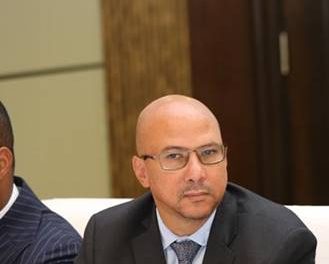
What if Tropical Storm Dineo had struck Namibia: The need for emergency logistics, the most powerful form of aid in times of crisis

By Frans Logan
Director of NGCL
When it comes to natural disasters, experience is usually considered to be of great value to handle the situation effectively and efficiently. Namibia just narrowly avoided disaster with Tropical Storm Dineo, which was luckily downgraded before it could damage the country.
Floods caused by the seasonal heavy rainfalls affect Namibia annually, but droughts are very common for the country as well. This often means that aid is required in one form or another, preferably as speedily as possible. Rapid response is of the essence, as lives are at stake. This is where logistics shines. 70-80% of costs to address a humanitarian disaster go into logistics. Getting food, supplies, fresh water, doctors, rescue workers and of course when necessary ‘search and rescue’ dogs to the area impacted is of paramount importance.
Statistics indicate that 83% of the victims of natural disasters occur in developing or emerging countries (CRED 2009). The infrastructure in these countries is often insufficient under regular circumstances and often completely destroyed or damaged during a catastrophe and therefore not accessible to emergency response teams. Together with the element of “time” that is unfortunately of essence during a time of crisis, puts extra pressure on delivering the much-needed aid, relief and services to the affected area.
Dealing with damaged infrastructure forms part of the logistics coordination and planning, as any mishap could mean the difference between life and death.
Having a solid, well rehearsed ’disaster relief plan’ in place, is essential to any country. Namibia has created the National Disaster Risk Management System (NDRMS), expressly for this reason. This doesn’t solve all the problems, challenges and issues facing a nation in times of disaster. Moreover, an inadequate communication facility causes difficulties in coordinating humanitarian aid and logistics and no NDRMS can mitigate this. In addition humanitarian and risk management becomes a regional and international effort, as disaster relief and aid in most cases comes from locations outside the affected country.
The task seems simple enough at first sight. A place without food, water and where people are in need of the essentials, should just be catered for and fast. Drive a truck, send a ship or fly a plane to the affected area and deliver the goods donated or procured by the government, other countries, NGO’s, charities and private individuals. How hard can it be?
In fact it is very difficult, as each and every disaster lays bare again. Lack of logistics coordination between partners is often a major issue leading to delays in distribution and overlapping in some activities. The lack of logistics manpower such as volunteers/aid workers/staff members and no agreements with service providers to provide emergency items all create huge bottlenecks.
For example, governments often require three quotes for food, water and other disaster supplies during a catastrophe that creates the unnecessary, frustrating and potentially life-threatening delays. This certainly is not a problem that only Namibia faces, as most countries find that they are procedurally not properly prepared for a disaster. This together with the lack of logistics know-how poses a real challenge. Factors like too much red tape and corruption continues to hinder aid and support to affected areas.
Applying this to the Namibian annual flood situation highlights a number of issues. In the first place these disasters have become annual events. This removes a lot of the uncertainty. The areas prone to the flooding are known although the magnitude of the disaster might not be clear. The stakeholders and partners are always the same and the political system remains the same and is stable. The communities that are affected are the same year after year and the same factors are prevalent every year. Dealing with these disasters should become easier and more stable supply chains should have been developed by now. The lack of sustainable and disaster-resilient infrastructure makes efficient and effective response impossible. The NDRMS should kick into action with the first floods, droughts or any other disaster. This then allows the supply chain to spring into action and get the life-saving logistics flowing in the form of aid, rescue workers and relief.
Having people, trained and educated in logistics together with exposure to the humanitarian activities is what it’s all about. Getting the right goods and services to the right people in the right destination is what it is all about. There is a need to understand the demand in any product supply chain as this becomes even more important when critical supply for relief is required. The training of local logistics experts in order to increase the preparedness in case of a disaster is the key when relief is required. The lack of professionalization of the logistics function is what can cause huge suffering during times of crisis.
The unseen and unsung heroes of many disaster relief operations are the men and women that move the goods. No country can ever afford to have insufficient number of logisticians, educated and experienced in the field of logistics. The saving of lives are what is at stake, and they contribute and make a difference in a real and essential manner, by simply moving people and things to the places where they are needed.











































